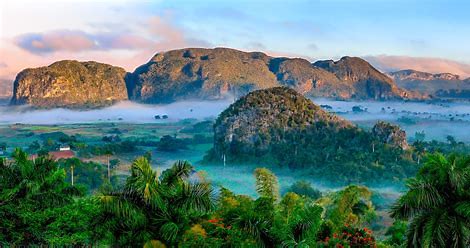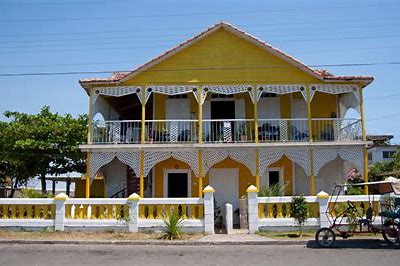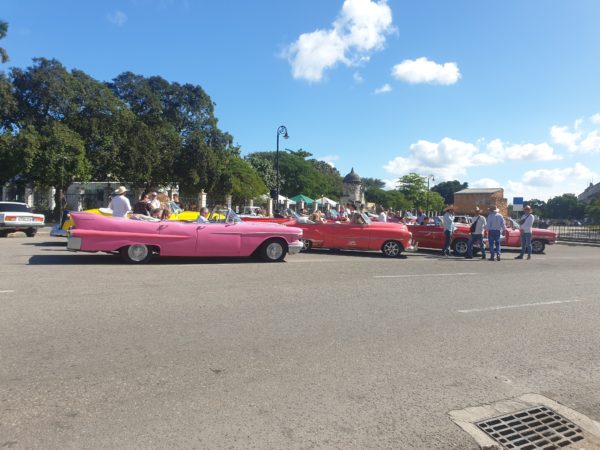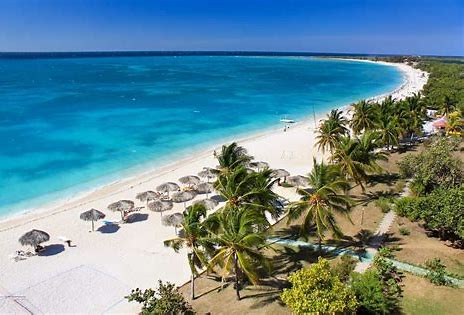Visiting Cuba as a Tourist

By Javier Herrera
HAVANA TIMES – Given its geographical location, Cuba is a paradisiacal tourist destination for sun and beaches: it is an archipelago made up of over 4000 islands, the largest being the island of Cuba, fom which the country takes its name from. Generally-speaking, the Cuban people are a lot more cultured compared to other countries within the region.
Ever since the 1990s, the regime in power has opened its doors to international tourism, to bring in foreign currency to survive the Soviet Union’s collapse.

Hasty development of the tourism sector has involved the renovation and remodeling of old hotels, as well as the construction of new and sophisticated resorts and getting cays and islets ready to receive all kinds of visitors.
Different economic activities linked to the tourism sector also appeared, which were practiced without a license or government authorization a lot of the time. The economic crisis that hit the country left thousands of workers and professionals as a surplus or unemployed, who were then absorbed by this parallel economy, which led to many of these working practices being recognized and approved by the Government, to the joy of those working in these services, offering a wider range of options to visitors.
Like any other cosmopolitan city or country – and even more so when it is geared towards tourism -, there is one and many different Cubas at the same time. Tourists can take away a completely different impression of our island, and both be real, depending on the type of tourism they choose to engage in.
There are a large number of tourists who arrive to our island on a package holiday, which are organized by official tour operators who provide them with the best and most sophisticated accommodation available. They can visit lots of interesting historic and cultural sites as part of this package holiday, enjoy our beautiful beaches bathed by the Caribbean Sea, and even come for sports or medical tourism.

Visitors who choose to visit the island on a trip organized down to the very last detail will most likely be given a sugar-coated image of the country. They will stay in hotels for tourists, dance in clubs where everyone is mostly a tourist and eat in restaurants offering international cuisine. They will be taken to visit paradisiacal places where they will hardly stumble across Cubans and will have very little or zero contact with the local population and their culture, which is really the heart of the country. This form of tourism gives foreigners the impression that it is very expensive to visit Cuba, and that prices don’t reflect the quality of the service a lot of the time.
You can also visit the island on your own, without prearranged plans and discover the day-to-day life of this real and fascinating Cuba that is its residents, its people, their customs, and typical language that identify them when spoken, wherever they are in the world. This kind of travel is also cheaper.
Different services have emerged around state-controlled tourism to complement the industry and they are a lot better, most of the time.
This form of tourism is also a lot more effective and pretty much the only way tourists coming to the country directly benefit the Cuban people, because State-owned tourism is run by foreign corporations in association with Cuban companies managed by the military-owned GAESA consortium, that doesn’t report back to the country, at least not officially.
Official tour guides, as well as Cuban hotels and specialist tour operators, can be found on hundreds of websites, and at any airport or point of entry on the island. I’d like to give you some tips in this article to make your stay in Cuba a lot more pleasurable and less expensive.
The first thing to bear in mind is the official exchange rate of currency. Cuba is a country that is suffering a severe economic crisis and high inflation, which means there is a discrepancy between the official price for foreign currency and the price people pay for it on the street. There is almost a 40% difference, which could be the difference in seeing your trip as expensive or affordable. On the other hand, it’s not hard to find someone to sell you this currency at an agro-market or any kind of market, where real exchange rates are announced.
Staying in private home rentals is another thing that makes traveling to Cuba a lot more worthwhile. The average rent for a place like this to stay is just a fraction of the price of a hotel room, and they have very similar amenities. It’s also a way to interact directly with the Cuban people and their culture.

There are rentals in very upscale neighborhoods, but there are some in more popular neighborhoods too, where you can share a home with ordinary Cubans and even take part in traditional and religious events that are typical to Cuba.

In terms of cuisine, Cuba has a huge number of state-owned restaurants geared towards tourism, as well as luxury private restaurants that compete with these in quality and prices, some of which are internationally renowned. There are also cheaper private restaurants where you can find the most delicious meals for a much more affordable price, but you need to really know Cuba or have somebody to help guide you if you want to find them.
When it comes to transport, you have the chance to rent a car from a state-owned company that has a fleet of vehicles just for tourism, or you can turn to private businesses. Private businesses offer you the service of renting a modern car with a driver included or rent the car without the driver.
There is also a chance of moving around using shared taxis that we Cubans use, that run a fixed route, although it’s not a very comfortable form of transport you might say, but they are very cheap. There are also private taxis that do direct trips to the passenger’s destination, and you agree on a price, so you can barter.

Another way of moving around the city and tourist destinations is to use the Gran Car taxi service, specializing in sightseeing tours. This company is made up of classic cars from the 1940s and ‘50s, that have a crew onboard: a driver and a guide, who master more than one language and will take you to tourist and cultural attractions, as well as anywhere else the tourist wants to go.

Resorts, beaches, natural reserves and other places to relax are free or are ridiculously low and accessible to everyone, so you just need to get to them and then eat at the services available there, depending on what’s on offer and your means.
Given the above, if I had to give one piece of advice to a tourist visiting the island for the first time it would definitely be: mix with the Cuban people, visit a Cuban family’s home, visit working class neighborhoods, dance with Cubans, make Cuban friends, feel the warmth of its people and I’m sure you’ll be coming back many times to the island as a tourist destination.





